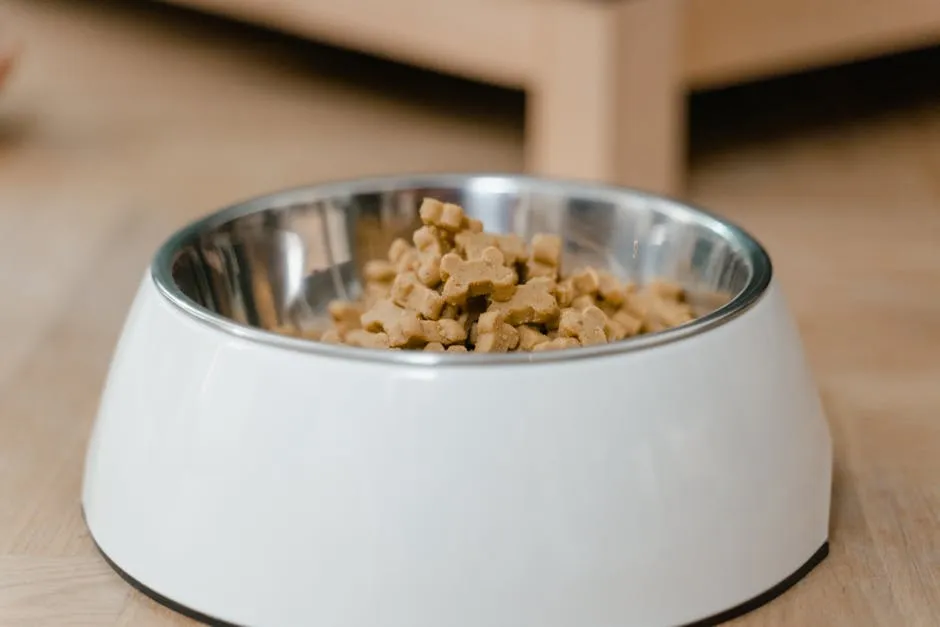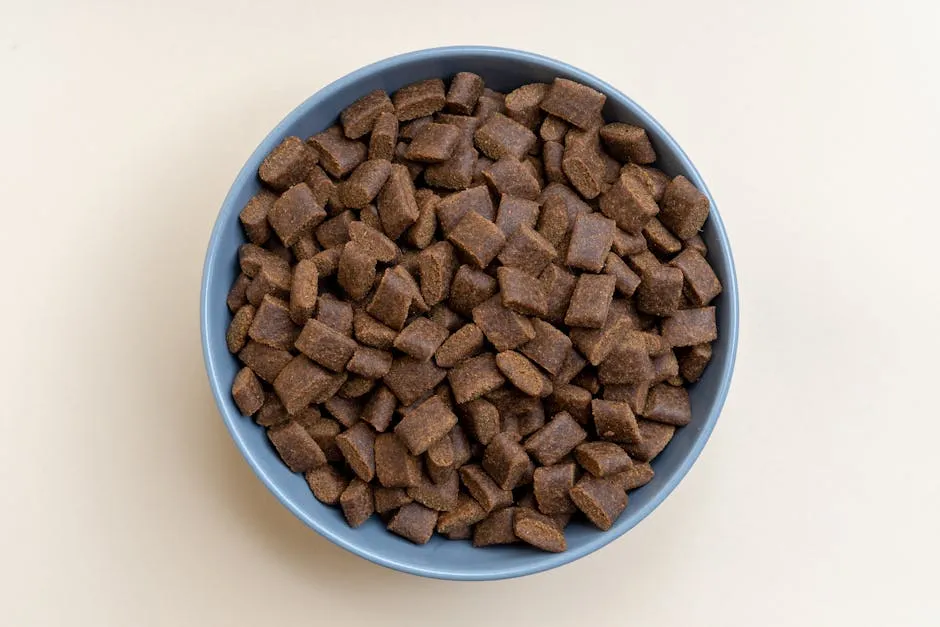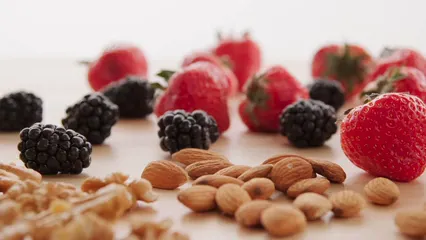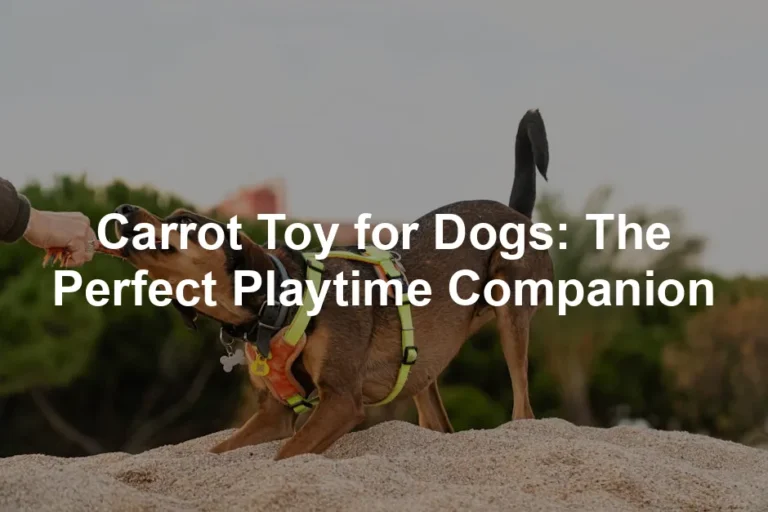Introduction
Grain-free dog food is becoming a hot topic among pet enthusiasts. More and more pet owners are turning to grain-free options, particularly for dogs with sensitive stomachs. This dietary shift stems from concerns over food allergies, intolerances, and digestive issues that many furry friends face.
Choosing the right food for your canine companion can significantly impact their health and happiness. For dogs experiencing digestive turmoil, a carefully selected diet is essential. Grain-free dog food can be a fantastic alternative, especially when grains like wheat, corn, or soy trigger upset tummies. Consider trying Wellness CORE Grain-Free Dog Food for a high-quality protein source that supports your dog’s health!
This article aims to explore various grain-free dog food alternatives that cater specifically to sensitive stomachs. We’ll provide tips to help pet owners choose the best food for their dogs. Because let’s face it, no one wants to deal with the aftermath of a doggie tummy ache!

Understanding Sensitive Stomachs in Dogs
Causes of Sensitive Stomachs
Sensitive stomachs in dogs can stem from various issues. Food allergies and intolerances are the most common culprits. Some dogs may react poorly to proteins like chicken or beef, while others struggle with grains. Dietary excess is another sneaky villain. Overindulging in rich foods or sneaking table scraps can wreak havoc on your pup’s digestive system.
Stress is also an unexpected factor. Changes in routine, moving to a new home, or a new addition to the family can contribute to stomach woes. Environmental changes may exacerbate existing digestive issues, making it vital to observe your dog’s behavior during such transitions.
Understanding the causes behind a sensitive stomach is crucial. It can help you make informed decisions about your dog’s diet and lifestyle. Always consult a veterinarian if your dog exhibits severe or persistent symptoms. After all, you want to be the best pet parent possible, right?

Symptoms of Sensitive Stomachs
Dogs are wonderful companions, but when their tummies are upset, it’s a different story. Symptoms of a sensitive stomach can include:
- Vomiting: Dogs may bring up undigested food or bile when their stomachs are irritated.
- Diarrhea: Loose stools can indicate that your dog’s digestive system is in distress.
- Excessive gas: If your dog is constantly passing gas, it’s time to pay attention.
- Bloating: A swollen abdomen can be uncomfortable and should be monitored closely.
If you notice any of these symptoms, especially persistently, consulting a veterinarian is crucial. Severe cases might indicate allergies or other underlying issues. Always put your pup’s health first!

The Case for Grain-Free Diets
When Grain-Free Makes Sense
Choosing a grain-free diet can be a game-changer, especially for dogs diagnosed with grain allergies or sensitivities. Some dogs simply can’t handle grains like wheat, corn, or soy. For them, these ingredients can lead to all sorts of digestive mayhem.
Grain-free diets typically feature alternative carbohydrate sources that are easier on the stomach. Think sweet potatoes, peas, and lentils. These options not only provide a digestible energy source but also deliver essential nutrients. You can find great options like Blue Buffalo Basics Grain-Free Dog Food that caters to sensitive pups!
Additionally, grain-free foods often contain higher protein levels, which can assist in muscle maintenance and keep your dog feeling full longer. This can also help combat overeating, which is a sneaky culprit behind many digestive upsets.
Another perk? Grain-free diets can help eliminate common allergens, reducing the likelihood of allergic reactions. By steering clear of grains, you may just find the perfect balance for your furry friend’s digestive health.
However, it’s essential to monitor how your dog responds to a new diet. Each dog is unique, and while grain-free might work wonders for one, it may not suit another. When in doubt, a chat with your vet can steer you in the right direction. After all, a happy tummy equals a happy pup!

Grain-Free Dog Food Alternatives
Types of Grain-Free Ingredients
Alternative Carbohydrate Sources
When it comes to grain-free dog food, the carbohydrate sources can make all the difference. Say goodbye to grains like wheat and corn, and hello to some tasty alternatives! Sweet potatoes are a fantastic choice. They’re not just delicious; they’re also packed with vitamins and minerals. Plus, they have a low glycemic index, which helps maintain steady blood sugar levels. You can grab some Sweet Potatoes to add to your dog’s diet!
Peas are another stellar option. They’re rich in fiber, which is essential for healthy digestion. And let’s not forget lentils! These little powerhouses are full of protein and can keep your pup feeling full and satisfied. Unlike grains, these alternatives are generally easier to digest, especially for our furry friends with sensitive stomachs. So, next time you’re shopping for dog food, look for these nutritious options that keep your dog’s tummy happy!

Protein Sources
Now, let’s chat about protein sources. For dogs with sensitive stomachs, the type of protein can be crucial. Fish is often a top contender. It’s not only easily digestible but also loaded with omega-3 fatty acids, which are fantastic for your dog’s skin and coat. Try Salmon as a great protein source for your pup!
Lamb is another great option. Many dogs tolerate it better than more common proteins like chicken or beef. But let’s not stop there! Novel proteins, such as venison or duck, can be excellent choices too. They introduce unique flavors and nutrients while reducing the risk of allergic reactions from more common ingredients.
Keep an eye out for foods that feature these protein sources. They provide the essential building blocks for your dog’s health without causing digestive distress. With such variety, your pup won’t just eat; they’ll dine in style!
In summary, finding the right grain-free ingredients is about balancing digestibility and nutrition. By choosing the right carbohydrates and proteins, you can help ensure your dog feels their best while enjoying every bite. So, get ready to fill that bowl with wholesome goodness!

Recommended Grain-Free Dog Food Brands
When it comes to choosing the right grain-free dog food, quality matters. Here are four notable brands that cater specifically to dogs with sensitive stomachs:
- Wellness CORE Digestive Health: This brand focuses on high-quality protein sources, combined with prebiotics and probiotics. It’s designed to support gut health while providing a balanced diet. With a blend of easily digestible ingredients, it’s a top contender for pups needing a gentle touch on their tummies.
- Blue Buffalo Basics: Known for its limited-ingredient diets, Blue Buffalo Basics is perfect for dogs with sensitivities. It features a single animal protein source and excludes common allergens. Plus, it includes pumpkin and easily digestible carbohydrates to promote digestive health.
- Hill’s Science Diet: A favorite among veterinarians, this brand offers a Sensitive Stomach & Skin formula that is specifically crafted for dogs with dietary sensitivities. It contains prebiotic fiber for gut health and real chicken as the first ingredient, ensuring a nutritious and balanced meal. You can find it here: Hill’s Science Diet Sensitive Stomach & Skin Dog Food.
- Purina Pro Plan Sensitive Skin & Stomach: This formula is tailored for dogs with sensitive stomachs, featuring salmon as the primary protein. It is enriched with prebiotic fiber, which helps maintain digestive health. It’s a reliable choice for pet owners who want to provide their dogs with quality nutrition without upsetting their stomachs.
For more information on grain-free dog food alternatives for sensitive stomachs, check out our detailed guide.
If you’re looking for alternatives to grain-free dog food, understanding and managing dog food allergies can be crucial. understanding and managing dog food allergies

Transitioning to Grain-Free Diets
Tips for Transitioning
Switching your dog to a grain-free diet? Don’t rush it! A slow transition is key to preventing digestive distress. Start by mixing a small amount of the new food with the old food. Gradually increase the new food over 7 to 10 days. This way, your dog’s tummy can adjust smoothly.
Keep a close eye on your dog during this period. Monitor for any signs of discomfort, such as vomiting or diarrhea. If your pup experiences adverse reactions, slow down the transition or consult your veterinarian for guidance.
Consistency is vital! Stick to a regular feeding schedule to aid digestion. Feeding at the same times each day helps regulate your dog’s digestive system, making it easier for them to adapt to the new diet.
Remember, every dog is unique. Some may adjust quickly, while others take a bit longer. Be patient and attentive to your dog’s needs. After all, a happy tummy leads to a happy pup! If you’re looking for a great Dog Food Storage Container to keep that food fresh, now’s the time to grab one!

Signs to Monitor During Transition
Transitioning your dog to a new grain-free diet can be a rollercoaster ride! Keep an eye on these signs to ensure your furry friend is adjusting well:
- Stool Quality: A smooth transition often leads to firm stools. If you notice loose or inconsistent stools, it might be time to slow down the change.
- Energy Levels: Is your pup bouncing around like a pogo stick? Great! Increased energy often indicates that they’re enjoying their new food. Conversely, lethargy might suggest something isn’t right.
- Appetite Changes: A healthy dog typically eats with gusto. If your dog suddenly becomes picky, it could be a sign of discomfort or dissatisfaction with the new food.
- Skin and Coat Condition: A shiny coat is usually a good sign! Watch for any new itching or skin issues, as they could indicate an allergy or intolerance.
- Overall Demeanor: Happy dogs wag their tails! If your pup seems irritable or mopey, it may be worth investigating further.
Monitoring these signs will help you determine if your dog is thriving on their new grain-free diet or if adjustments are needed.

Homemade Grain-Free Recipes
Benefits of Homemade Diets
Cooking for your dog can be rewarding! Homemade grain-free meals offer several advantages, especially for pups with sensitive stomachs. You control the ingredients, which means you can avoid potential allergens. Plus, you can tailor meals to meet your dog’s specific needs.
Homemade meals often contain fresher, high-quality ingredients, leading to better digestion and nutrient absorption. Dogs often love the taste of home-cooked meals, making mealtime a joyous occasion. Additionally, preparing food at home can save money in the long run, especially when you create larger batches. Don’t forget to get a Dog Cookbook for some great homemade recipes!
So, roll up your sleeves and channel your inner chef! Your dog will thank you for it.

Sample Recipes
- Sweet Potato and Chicken Stew
- Ingredients: 2 cups sweet potatoes (cubed), 1 cup cooked chicken (shredded), 1 cup green beans (chopped), 4 cups chicken broth (low sodium).
- Instructions: In a pot, combine sweet potatoes and chicken broth. Bring to a boil, then simmer until sweet potatoes soften. Add chicken and green beans, cooking for an additional 5 minutes. Allow to cool before serving.
- Nutritional Notes: Sweet potatoes are rich in fiber and vitamins, while chicken provides lean protein.
- Fish and Vegetable Medley
- Ingredients: 1 cup salmon (cooked and flaked), 1 cup carrots (diced), 1 cup peas, 2 tablespoons olive oil.
- Instructions: In a skillet, heat olive oil and sauté carrots until tender. Add peas and salmon, mixing until heated. Cool before serving.
- Nutritional Notes: Salmon is loaded with omega-3 fatty acids for a shiny coat, while peas add fiber and protein.
- Beef and Pumpkin Mash
- Ingredients: 1 pound ground beef (cooked), 1 cup pumpkin puree (not pie filling), 1 cup spinach (chopped).
- Instructions: Combine cooked beef, pumpkin, and spinach in a bowl. Mix until well incorporated. Serve after cooling.
- Nutritional Notes: Pumpkin is excellent for digestion, and beef provides essential amino acids.
These recipes are simple, nutritious, and sure to delight your dog’s palate. Happy cooking!

Conclusion
In summary, grain-free dog food can be a fantastic option for pups with sensitive stomachs. It offers potential benefits like reduced digestive upset, improved nutrient absorption, and fewer allergens. Homemade meals also provide control over ingredients, ensuring your dog gets the best nutrition possible.
Before making significant dietary changes, always consult your veterinarian. They can help tailor a diet that meets your dog’s unique needs. Remember, finding the right balance is key to promoting your dog’s overall health and happiness. A happy tummy equals a happy pup! And for those who love to pamper their pets, a Dog Bed (Orthopedic) can make a world of difference!
Please let us know what you think about our content by leaving a comment down below!
Thank you for reading till here 🙂
All images from Pexels





